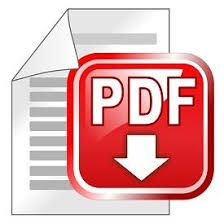Location:
PMKI > Organizations
& Governance > Organizational Inputs,
Methodologies & Maturity Models.


- Organizational Inputs
- Methodologies
- Maturity Models
- Useful External Web-links &
Resources.
Other related sections of the PMKI:
- PMOs
The differences between Organizational Process Assets (OPAs) and Enterprise Environment Factors (EEFs) are discussed in WP 1026 (below). OPAs are the artifacts and information the organization has acquired that you may, or should, use to assist in the successfully deliver the project. One of the key OPAs should be an effective set of processes and procedures, incorporated into a methodology.
WP: EEF & OPAs. Enterprise Environment Factors and Organizational Process Assets are the overarching framework every project and program has to operate within.
 The
organization should also take responsibility for
determining the way its projects will be undertaken. This
involves an number of interlinked considerations:
The
organization should also take responsibility for
determining the way its projects will be undertaken. This
involves an number of interlinked considerations:
Effective processes and procedures start from well founded principles, only after these are established add processes and practices. And the inverse - don't accept or apply any process or practice without first determining what principle that process or practice is based on or informed by.
WP: The value of Standard Operating Procedures. Well designed SOPs and workflows allow 'bounded initiative' to be used as an 'agile' management approach.
WP: Process Improvement. Using 'light' and 'lean' concepts to remove inefficiencies and reap the benefits of effective processes.
Art: Processes -v- People. You can get the best of both worlds by embedding organizational agility into your procedures, methodologies and management.
Blg: Self Correcting Processes. Designing efficient processes so that their use is almost unavoidable.
Art: Processes in Project Management. The next generation of project management standards to be released by both ISO and PMI in 2020 will look radically different to their predecessors. This article explains why 'processes' are being dropped from the new standards (and their use in supporting the implementation of the standards).
For the application of methodologies, standards, processes and procedures visit our Project Management Integration page.
Organizational oversight, management and governance of
projects and programs includes
(click through to the relevant section):
Methodologies including: PRINCE2, MSP, Lean, Agile, and other PMBOK based methodologies. Methodologies are typically supported by software - click through to see out comprehensive list of project management tools.
WP: Methodologies. Methodologies define a step-by-step series of processes for delivering projects or any other business outcome and define who, what, how and when things should be done.
Art: Why the PMBOK is not a Methodology. The PMBOK® Guide is a guide to generally accepted good practice; a methodology defines what should be done by who, when and how.
DP: PRINCE2®, the PMBOK® Guide and ISO 21500. AXELOS White Paper outlines similarities and differences these three standards and best practices.
DP: Thoughts on Agile.
Agile is a soft product development methodology that
requires an adaptive approach to project management.
Click through for a more in-dept discussion on Agile
approached to project management.
HERMES 5 is a straightforward project management methodology for IT, services, products and business organizations. Developed by the federal administration of Switzerland HERMES 5 is an open standard available to all: http://www.hermes.admin.ch/.
Maturity Models including: CMMI, P3M3, and OPM3 (now retired).
Note: The decision to invest in improving organizational maturity and the aspects that are important to achieve is a fundamental decision that has to be mae by the organizations governing body - see more on governance.
Using a maturity model helps your organization identify and deliver the right projects to advance its strategy and select only the projects that will deliver business results. A well structured model isolates process improvements that add value, while forcing organizations to consider external pressures increasing operational and organizational efficiency.
PP: Modelling Your Maturity, P3M3, CMMI and/or OPM3. These three well defined ‘maturity models’ are internationally available, which is the most appropriate to use? Successful organizations apply project management processes effectively and consistently. P3M3 (Portfolio, Programme & Project Management Maturity Model) was developed by the Office of Government Commerce (OGC) in the UK to support its Gateway, MSP and PRINCE2 methodologies. The Capability Maturity Model® Integration (CMMI®) was developed by the Software Engineering Institute (SEI) to assist organizations to improve their processes for developing and maintaining the products and services of the organization. The Organizational Project Management Maturity Model (OPM3®) was developed by the Project Management Institute (PMI) to assist organizations to improve their capabilities for managing projects, programs and portfolios, leading to business improvement. As projects, programs and portfolios are generally focused on developing and maintaining products and services, the goals for P3M3, CMMI and OPM3 should be aligned. This paper compares and contrasts the three standards and identify their strengths and weaknesses.
Best Management Practice products, UK Government
(formally OGC, now Axelos) - the umbrella site dedicated
to making access to information quick and easy - https://www.axelos.com/
- ITIL - IT Service Management: https://www.axelos.com/best-practice-solutions/itil
- PRINCE2 - Project Management: https://www.axelos.com/best-practice-solutions/prince2
- MSP - Programme Management: https://www.axelos.com/best-practice-solutions/msp
P3M3 - Portfolio, Programme & Project
Management Maturity Model (P3M3)
https://www.axelos.com/best-practice-solutions/p3m3
Method123 - Project Management Templates, Tools, Forms and Processes, including free papers and a free e-book - https://www.method123.com
PROJECT in a box Community Edition - Provides you with official PRINCE2© and DSDM Atern materials built into structured processes, to help keep your practices authentic. It is a fully portable product: Free download from https://www.projectinabox.org.uk
Governmental Project Management Maturity Model - Projects are the main development tool for every government and state. Those which achieve higher level of project management maturity, develop faster, and better meet the needs of their citizens: https://gpm3.eu/
 For papers on Organizational Inputs, Methodologies
& Maturity Models presented at the PGCS
Annual Symposium see:
For papers on Organizational Inputs, Methodologies
& Maturity Models presented at the PGCS
Annual Symposium see: